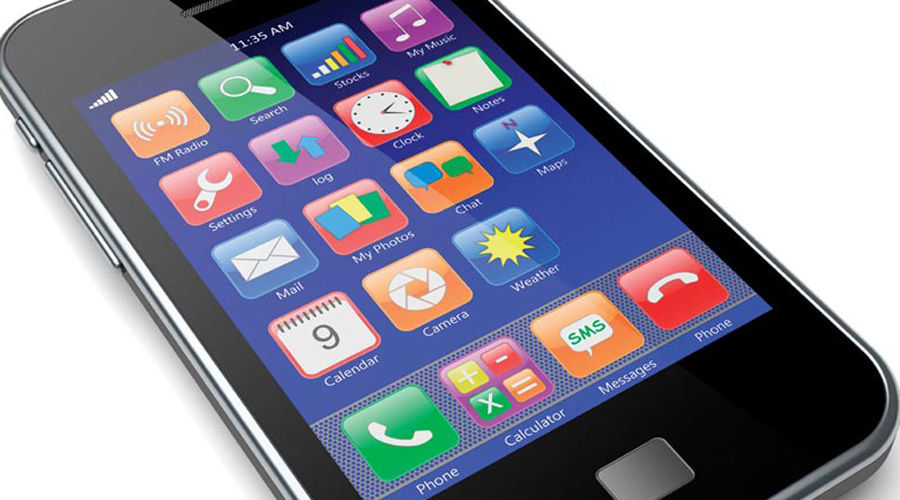With one device, your diabetic patients can start improving their health. Hint: It’s more of an ordinary gadget than a blood glucose monitor. Your patients likely have it in their pocket or purse right now—it’s their cell phone.
Turns out smartphones are good for more than checking email on the go and sending pictures. Smartphone applications, which are also known as apps, as well as the email, online and texting capabilities of mobile phones, can help diabetic patients better manage their disease, according to a 2012 report published by the eHealth Initiative, a non-profit organization that researches and identifies ways health IT can improve healthcare.
Although the report specifically looked at patients with diabetes in socially disadvantaged populations, all diabetic patients can benefit from an additional option to help them keep up with the day-to-day requirements of their health. And, they can do it all with their cell phone—a device they likely already use considering that nearly half of American adults own smartphones, according to a February 2012 report by the Pew Research Center.
James Bennett, R.Ph and a certified diabetes educator, said he has noticed that text messaging has become especially useful in recent years for pharmacists and their diabetic patients, as well as for their patients in general.
Text messaging capabilities that remind patients to pick up their medications and to refill their prescriptions are seeing increased use, likely because more people simply have smartphones, said Bennett, who manages the diabetes education and disease management center in the James Bennett Apothecary in Corinth, Mississippi. “Even in my small town, which is in a fairly rural area, you see a surprisingly large amount of people who use smartphones.”
Going digital
The unique features of mobile phones can help diabetes patients better manage their condition. Email, text messaging and the easy online access provided by smartphones create more opportunities for patients to communicate with their healthcare providers and to learn about their disease.
As a chronic condition, diabetes requires consistent, active effort by patients to self manage their disease. Diabetic patients have to regularly check their blood glucose levels, keep track of their diet and exercise regimens and maintain any additional treatments. Fortunately, new mobile technology can help.
“One of the things that mobile technology can do for diabetic patients is to keep them focused on their condition,” Bennett said. “Electronically you can stay in touch with patients easier and, with diabetes especially, staying in touch is so important.”
“At our diabetes education center, if patients go more than two weeks without contact with you, then there’s a good chance they’ll get lost,” he said. “After an initial consult, you get them really enthusiastic and if they come back, you can keep that momentum going. But, if they don’t come back, you lose it. That’s where technology can help. Even if you’re not face-to-face, using mobile technology is still a viable method of follow up.”
Apps for diabetes
Smartphone apps are quickly becoming more widely used for diabetes management. From apps that monitor insulin levels and blood pressure to diabetes-specific weight management tools and apps to keep track of medications, if diabetic patients need help with a specific component of their treatment, they can likely find an app for it.
Mobile apps for health are gaining in popularity. Already 60 diabetes-specific apps exist for the iPhone, and more than 260 apps are available over a number of other mobile platforms, according to the eHealth Initiative report.
Some apps even work as a more comprehensive treatment system. Instead of monitoring just one component, like weight management, these all-inclusive apps contain a variety of different features that give diabetic patients a better representation of their overall health.
For example, some apps link to online portals that store the data that the patient inputs through the app. This online connection enables these apps to hold larger amounts of information than single-component apps can handle. They can store blood glucose levels, carbohydrate intake, medication adherence, weight data and more—instead of just one of these types of data. Patients can then share this detailed information with their physician, pharmacist and caregivers, who can then more effectively treat them.
“Pharmacists need to be aware that smartphones and other devices that allow access to patient monitoring data are incredibly valuable,” Bennett said. “These devices enable instant remote communication with patients to coach them, remind them to take medicine, confirm an appointment and more.”
How pharmacists can help
Your diabetic patients come to your pharmacy regularly to stock up on insulin or to refill their diabetes medication. As one of their most accessible healthcare providers, your patients depend on you to help them manage their disease.
Encourage your patients to look at mobile apps and new technologies to help them successfully take charge of their health. To do so, you’ll need to educate yourself on the apps available. If you own a smartphone, download and test some diabetes apps to get a feel for what’s available.
Pharmacists also need to look into the ways that their patients and their community as a whole are using mobile technology. “We have to be able to know about, utilize and recommend the technologies that the health providers in our area are promoting,” Bennett said. In the future, pharmacists will also need to stay informed on the types of technology the insurance companies recommend or require for their members.
Encouraging your diabetes patients to use mobile technologies can not only improve their health, it can also strengthen your business. When patients learn how they can use their smartphones to improve their health from you, they’ll view your pharmacy and your pharmacists as diabetes experts. They’ll likely want to return to your pharmacy for more information and possibly even recommend your store to others. Who knew being tech savvy could be so good for business?
Download this! 5 apps for diabetic patients
Calorie Counter by MyNetDiary
This app makes keeping track of a diet easier. Users can record meals, water intake, exercise, and weight loss with this comprehensive app, which works with MyNetDiary online. Available on iPhone, iPod Touch, iPad, BlackBerry and Android.
dLife
Created by the dLife website, this app enables users to log glucose levels, find recipes and nutritional information, and more. Users can graph daily, weekly or monthly glucose levels and track trends, all of which they can e-mail to themselves or to their providers. Available on iPhone, iPod Touch and iPad.
Fooducate
Armed with this app, users can scan barcodes and search for healthy foods at the grocery store. Fooducate grades groceries and explains what’s really inside each product. It also gives recommendations on healthier alternatives. Available on iPhone, iPod Touch, iPad and Android.
Glucose Buddy
It’s easy for users to record blood glucose levels, insulin injections and diet and exercise information with Glucose Buddy. This app connects users to Glucose Buddy forums and allows them to sync the app to an online account, where they can manage their blood glucose data and review trends. Available on iPhone, iPod Touch and iPad.
Workout Trainer
This app helps users stay fit by featuring workouts led by personal trainers. The exercises, which don’t require any equipment, include step-by-step photos, videos, and audio. Users can track their progress through their phone or online. Available on iPhone, iPod Touch, iPad, BlackBerry and Android.
List courtesy of the American Diabetes Association












